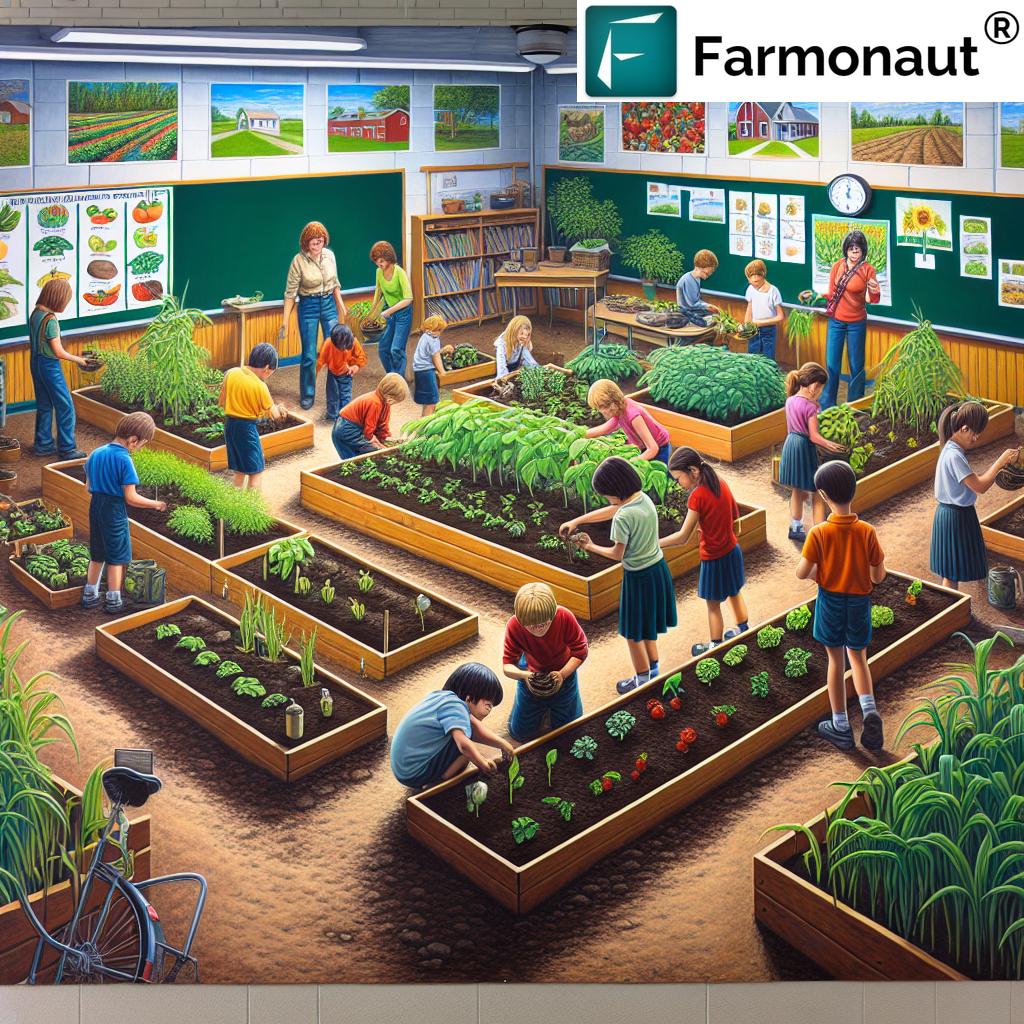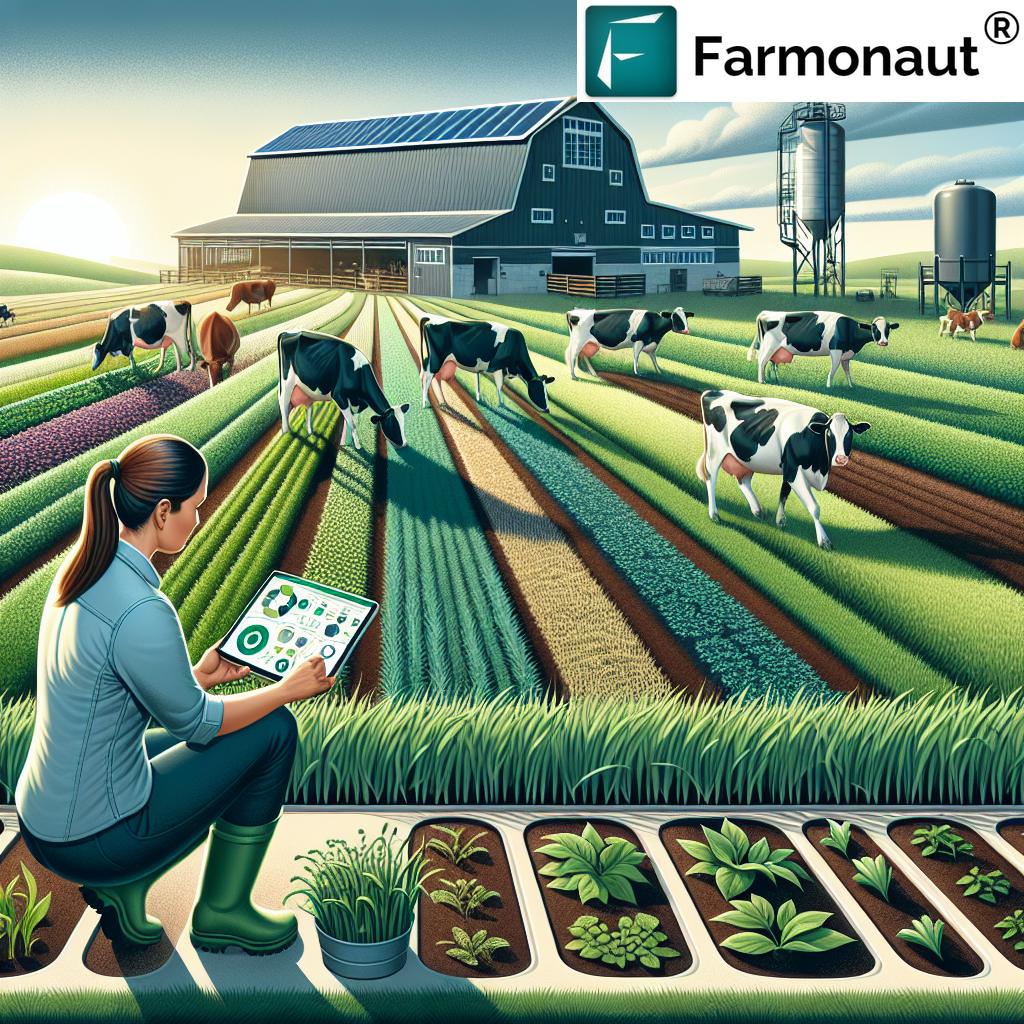Agriculture Education in Manitoba: 5 Powerful Ways Garden Kits Inspire
Introduction: The Revolution of Agriculture Education in Manitoba
Manitoba Crop Alliance (MCA) has made a historic investment in the future of agriculture education in Manitoba—one that transcends rural and urban boundaries, empowers teachers, and engages students. With an unprecedented $195,000 investment in Agriculture in the Classroom – Manitoba (AITC-M), the province is ushering in a new era of classroom garden programs and seed-to-harvest learning experiences. This initiative isn’t just about handing out seeds or garden kits for schools; it is about nurturing a new generation of food-literate, environmentally conscious, and agriculture-savvy leaders.
In an age where fewer children grow up on farms or have firsthand experiences with rural farming education, the gap between “farm and fork” understanding can widen. By integrating soil and crop science, sustainable practices, and hands-on plant growth experiments into Manitoba’s classrooms, we are helping students build critical food literacy and a deeper appreciation for the crops, people, and processes that put food on their tables.
In this comprehensive post, we will explore five transformative ways garden kits and innovative curricula are inspiring Manitoba’s students. Along the way, we’ll highlight the opportunities offered to both students and educators, share essential resources—including precision technology from Farmonaut—and provide guidance on choosing the best classroom garden programs for your school.
Why MCA’s Investment Matters for Manitoba Classrooms
The significance of the MCA’s latest investment cannot be overstated. This is a tangible commitment to the transformative power of agriculture education in Manitoba—an approach that blends modern technology, local food systems, and student-centered learning. As Jonothan Hodson, MCA Chair, aptly summarized, “As fewer people grow up in rural areas, it has become especially important that young people gain an early understanding of farming and where their food comes from.”
- Nationwide Impact: Manitoba sets the stage for other provinces, showcasing the impact classroom garden kits have on engagement, environmental stewardship, and food security.
- Focus on Food Literacy for Students: By engaging students in the full cycle of seed-to-harvest, the programs inspire meaningful engagement with the food they eat, empowering children with lifelong knowledge.
- Sowing Leadership: These experiences extend beyond the classroom—cultivating curiosity about agricultural careers, sustainability practices, climate resilience, and innovative food systems.
The ripple effects of this funding expand well beyond independent classrooms. They foster public trust, advance the province-wide conversation about sustainable food production, and inspire the next generation to lead with environmental integrity.
1. Garden Kits for Schools: Cultivating Curiosity & Care
When we think of agriculture education in Manitoba, the image of students huddled excitedly around tabletop gardens or raised plots comes to mind. Garden kits for schools are the foundation upon which these vibrant, hands-on programs flourish. From rural farming education to urban classrooms, these kits put the power of growing food into the hands of every child, regardless of location or resources.
What Are Classroom Garden Kits?
Classroom garden kits are comprehensive, ready-to-use packages tailored for educators. They typically include all the materials needed for planting and maintaining a small-scale, educational garden: seeds, soil, planters or containers, tools, growing guides, and sometimes digital curriculum or data-collection resources. Manitoba’s educators are discovering how these kits make plant growth hands-on learning practical and achievable for everyone.
- Inclusivity: Garden kits adapt to windowsills, rooftops, or schoolyards—making agriculture education accessible, even in city schools with limited green space.
- Plant Growth Observation: Students witness firsthand the magic of seed to harvest—tracking the progress of tiny sprouts to flourishing crops and edible produce.
- Interactive Learning: Real soil, tangible seeds, and visible plant growth inspire wonder, inquiry, and a genuine passion for sustainable food systems.
Pro Tip:
For educators keen to maximize engagement, pair your school’s kit with digital tools for real-time plant and soil observation. Consider supplementing with data on crop monitoring and weather impacts using apps like Farmonaut’s Mobile App.
2. Seed to Harvest Curriculum: Nurturing Food Literacy for Students
A central advantage of Manitoba’s classroom garden programs is the immersive seed to harvest curriculum—structured learning pathways that guide students through every stage of plant and crop growth. This holistic approach is designed to boost food literacy for students and connect young learners with Canada’s farming heritage and future.
What Does a Seed to Harvest Curriculum Involve?
- Planting: Students select seeds based on climate, soil, and time constraints—mirroring the decisions made by real Manitoba farmers each spring.
- Observation & Journaling: Regularly recording changes, students learn about soil moisture, sunlight, and growth cycles. They develop essential science skills while gaining an appreciation for patience and perseverance.
- Maintenance & Problem Solving: Whether it’s tackling pests, adjusting water, or observing nutrient uptake in soil, students encounter and address real-life agriculture challenges.
- Harvesting: Experiencing the joy of picking produce or flowers instills respect for farmers and the resources required to nourish our province. Harvest time offers space for reflection on the journey from seed to plate.
Key Outcomes:
- Critical Food Literacy: Students learn ingredients don’t just appear in stores—they are carefully grown, managed, and harvested.
- Cultural Relevance: Curricula can include discussions on Indigenous traditional agriculture, local crop varieties, and Manitoba’s diverse food traditions.
- Real-World Math & Science Skills: From measuring plant height to calculating water usage, every step reinforces STEM concepts.
- Environmental Awareness: Reflection on soil health, crop rotation, and resource conservation deepens understanding of sustainability.
With the seed to harvest journey, Manitoba students experience firsthand the cycle of production. We motivate them to appreciate—and maybe even dream of—a career in Manitoba’s thriving agriculture sector.
3. Soil and Crop Science: Soil Health, Plant Growth & Hands-on Learning
One of the most powerful ways to teach agriculture to kids is by exploring the wonders of soil and crop science. By getting their hands dirty—literally—students learn about the hidden ecosystems beneath our feet and the factors that influence healthy crop production.
Plant Growth Hands-On Learning in the Classroom
Teachers can use garden kits for sensory-rich science lessons:
- Soil Composition Tests: Students investigate sand, silt, and clay composition in local soil samples and discuss how it affects crop choices in Manitoba.
- Composting Projects: Comparing garden and kitchen waste to enrich the soil, students see resource recycling in action.
- Plant-Growth Experiments: Set up controlled tests—such as varying light/water/soil types—to observe the direct impact on seed germination and plant health.
- Disease & Pest Monitoring: Like Manitoba’s producers, students learn to spot, document, and respond to plant health issues.
Learning Stem-to-Root: Examples for Every Age
- Elementary: Watch roots grow in transparent planters, measure soil moisture with simple tools, and chart growth rates.
- Middle School: Run experiments with fertilizers, study photosynthesis, and debate the benefits of crop rotation.
- High School: Analyze soil nutrients, investigate carbon cycling, or simulate Manitoba’s agricultural ecosystems using data.
By making soil and crop science visible and relatable, we deepen student engagement. These lessons build the foundation for sustainable farming, responsible resource management, and scientific inquiry.
To further enhance the experience, educators can integrate high-tech resources like Farmonaut’s Carbon Footprinting Toolkit, helping students understand their agriculture projects’ environmental impact in real-time.
4. Connecting Students with Farming: Bridging Urban and Rural Perspectives
In Manitoba, “teaching agriculture to kids” means more than growing a tomato plant; it’s about deepening our collective connection with farming culture, technology, and community. Through classroom garden programs, we bridge the gap between children living in the city and those growing up in rural landscapes.
Connecting Students with Manitoba’s Farming Heritage
- Rural Farming Education: Students living outside urban centers bring lived experience—perhaps even family farming stories—into the classroom.
- Urban Agriculture Experiences: City schools gain exposure to agriculture systems and the complexities of food supply, crop transportation, and sustainable city growing.
- Community Engagement: Programs often involve local producers through classroom visits, project evaluation, or garden harvest celebrations.
- Career Exploration: Highlighting Manitoba’s wide-ranging agri-food sector encourages students to envision a future in agricultural science, technology, management, or advocacy.
These cross-community opportunities allow students to see “who grows our food?” and “how is sustainable farming achieved?” in real time.
Expanding Horizons with Technology
New tools, like Farmonaut’s Blockchain Product Traceability, demonstrate how modern agriculture safeguards food authenticity and builds trust. Students can trace the journey of a crop—from seed in Manitoba soil to a meal on the family table—gaining appreciation for every link in the chain.
This technology, integrated at scale, is also available for developers and institutions. Expand your classroom further by exploring Farmonaut’s API or the API Developer Docs.
5. Inspiring Leadership & Sustainability in Agriculture Education
Empowering students to participate in and lead sustainable agriculture projects transforms our classrooms—and our world. With MCA and dedicated educators, we are planting the seeds of citizenship, environmental stewardship, and agricultural innovation in every Manitoba school.
How Do Classroom Garden Programs Foster Leadership?
- Group Collaboration: Students collaborate on planning, planting, data collection, and harvest, building teamwork and leadership skills.
- Community Outreach: Sharing garden produce with local charities or creating “farmers’ markets” within schools encourages responsibility and community-mindedness.
- Sustainability Challenges: Lessons in water conservation, carbon cycling, composting, and reduced pesticide use sow the values of sustainable agriculture early.
- Real-World Technology Integration: With access to digital agriculture data, students analyze carbon impact, plan more efficient crops, or experiment with sustainable practices—mirroring the strategies of modern Manitoba producers.
By weaving agricultural knowledge and sustainability into the fabric of Manitoba schools, we are meeting today’s educational standards and tomorrow’s environmental and leadership challenges.
Comparison Table: Top Classroom Garden Kit Programs in Manitoba
To guide your school’s agriculture education journey, we’ve compared five popular classroom garden kits and programs currently making an impact in Manitoba classrooms. This table highlights their key features, sustainability focus, estimated grade levels, engagement potential, and program duration.
| Program/Kit Name | Key Features | Grade Levels (Estimated) | Sustainability Focus | Est. Student Engagement Impact | Duration (weeks) |
|---|---|---|---|---|---|
| AITC-M Garden Starter Kit | All-in-one with seeds, soil, planter, Manitoba crop guides | K-6 | Compostable materials, crop rotation training | High (active weekly tasks) | 8-10 |
| Urban Windowsill Herb Kit | Compact, fits city classrooms, herb focus | K-9 | Emphasizes water conservation, local herbs | Moderate to High (daily interaction) | 8-12 |
| Soil Science Discovery Box | Multiple soil sample kits, digital guides, crop trials | 4-10 | Soil health, erosion control modules | High (group experiments) | 12-14 |
| Indigenous Food Sovereignty Kit | Native Manitoba seeds, traditional planting cycles | 2-12 | Respect for land, biodiverse planting, tradition | Very High (cultural engagement) | 10-16 |
| Sustainable Farmers’ Challenge Kit | Integrated digital journal, crop tracking app, garden tools | 6-12 | Simulates crop health tracking, precision management | High (tech + hands-on tasks) | 6-10 |
Each of these kits offers a unique entry point for food literacy for students—ensuring solutions for every Manitoba classroom, whether rural or urban.
Farmonaut: Enabling Precision Agriculture & Sustainable Classroom Programs
As agriculture education in Manitoba embraces modern learning, leveraging smart tools becomes essential for maximizing hands-on impact and sustainability insights. Farmonaut is transforming the way agriculture data and technology empower both farmers and students.
How Does Farmonaut Support Classroom Agriculture?
- Real-Time Crop Health Monitoring: With Farmonaut’s satellite-based platform, schools can track vegetation health (NDVI), soil moisture, and more from the classroom, even comparing with regional crop data.
- AI-Driven Advisory: The Jeevn AI tool helps students understand how weather or hydro conditions affect plant growth, simulating real-world agricultural decision-making.
- Blockchain Traceability: Demonstrating crop journey and ensuring the authenticity of “Manitoba-grown” products, Farmonaut’s blockchain tools model transparency and trust for students and consumers alike.
- Resource Management: Students can explore concepts such as optimal water use, field logistics, and the environmental impact of classroom gardens using Farmonaut’s Fleet Management Solutions.
- Carbon Footprinting: Model real-world environmental stewardship with Farmonaut’s Carbon Footprint Calculator, helping students relate personal actions to global climate goals.
- Scalable Learning: For schools managing multiple gardens or district-wide projects, Farmonaut’s Large-Scale Farm Management Platform can be a resource for centralized monitoring and reporting.
Accessibility for Every Educator and Student
- Web and Mobile Apps make high-tech farm data accessible—allowing teachers and students to track and learn from crop and soil science experiments anywhere.
- Farmonaut’s API and Developer Docs enable custom integration for school districts or agritech education programs.
- Crop Loan and Insurance Solutions teach students about risk, farm financing, and the vital role of data-driven verification.
- Discover AI-based insights, resource allocation, and real-time crop health tracking through Farmonaut Android/iOS/web apps.
How to Get Started?
Open the Farmonaut Web App — or download for Android and iOS — and begin bringing real-world, precision agriculture data into your classroom’s hands-on projects.
Frequently Asked Questions (FAQ)
What is agriculture education in Manitoba and why is it important?
Agriculture education in Manitoba is a province-wide initiative, supported by the Manitoba Crop Alliance and organizations like AITC-M, to bring hands-on, sustainable food systems learning to students of all ages. This education is vital for fostering public trust in farming, strengthening local food literacy, and preparing future leaders for roles in rural farming, crop production, agri-tech, and environmental stewardship.
How do classroom garden kits help students learn about agriculture?
Garden kits for schools provide students with the tools, seeds, soil, and instructions they need to plant, nurture, and observe the growth cycle from seed to harvest. These hands-on experiences make science and sustainability tangible, deepen understanding of food origins, and foster curiosity about crop science and soil health.
Can urban schools benefit from garden programs as much as rural schools?
Absolutely. Urban classrooms may have less land, but tailored garden kits and compact herb or microgreen modules allow every student to experience plant growth and food systems learning. In fact, urban students gain new perspectives on farming realities, sustainability, and food security through these programs.
What does a seed to harvest curriculum typically include?
Seed to harvest curriculum ensures students are involved at every step: planting, observing germination, researching and maintaining soil health, monitoring crop growth, and harvesting produce. This approach can be supported by digital apps, crop journals, and even satellite monitoring for STEM enhancement.
How does Farmonaut technology enhance agricultural education?
Farmonaut provides precision agriculture tools—such as real-time remote crop health monitoring, AI-driven crop advisory, and blockchain-based traceability—that bring real data into the classroom. Students can observe satellite imagery of crop fields, simulate environmental challenges, and see the impact of agricultural decisions on sustainability and productivity.
Where can I find more resources for agriculture education in Manitoba?
Start with Farmonaut’s web and mobile platforms for practical tools and classroom support. For curriculum materials, check official resources from Agriculture in the Classroom – Manitoba, and explore community garden networks across the province.
Conclusion: Sowing Tomorrow’s Seeds Today
The historic investment by Manitoba Crop Alliance is about more than expanding classroom gardens—it’s about investing in our children, our land, and our collective future. Through agriculture education in Manitoba, immersive seed to harvest curricula, and modern technology integration, we are empowering students across the province to become informed, capable, and inspired leaders.
- We connect students, regardless of background, with the essential work of farming and sustainable food production.
- We nurture food literacy, environmental stewardship, and curiosity for science and innovation.
- We harness technology—like Farmonaut’s AI, satellite, and blockchain tools—to prepare our students for a changing agricultural landscape.
Together, let’s continue to grow, innovate, and support our communities—so that every child in Manitoba understands where their food comes from, how it is produced, and why it matters.


















